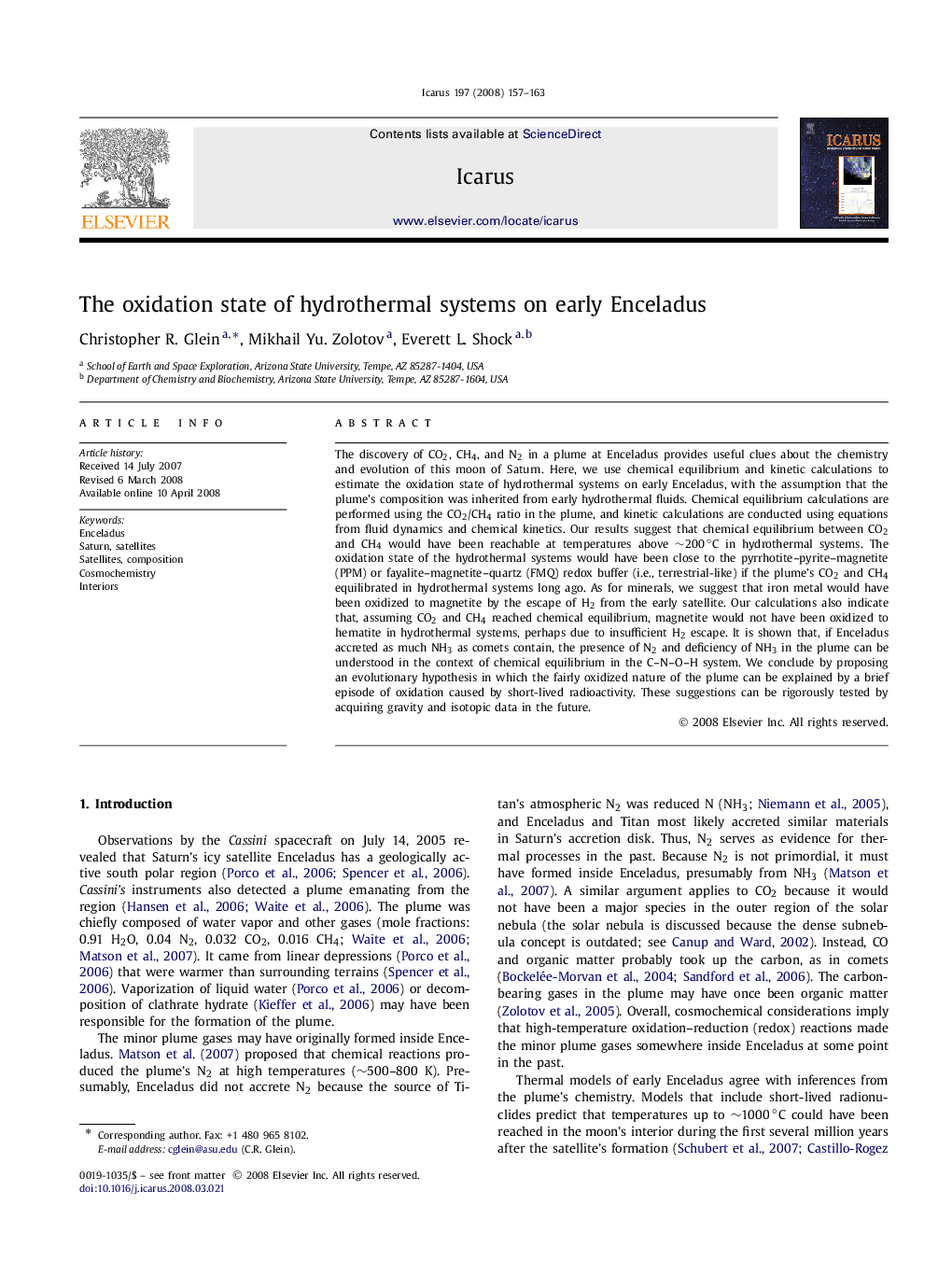| Article ID | Journal | Published Year | Pages | File Type |
|---|---|---|---|---|
| 1775004 | Icarus | 2008 | 7 Pages |
The discovery of CO2, CH4, and N2 in a plume at Enceladus provides useful clues about the chemistry and evolution of this moon of Saturn. Here, we use chemical equilibrium and kinetic calculations to estimate the oxidation state of hydrothermal systems on early Enceladus, with the assumption that the plume's composition was inherited from early hydrothermal fluids. Chemical equilibrium calculations are performed using the CO2/CH4 ratio in the plume, and kinetic calculations are conducted using equations from fluid dynamics and chemical kinetics. Our results suggest that chemical equilibrium between CO2 and CH4 would have been reachable at temperatures above ∼200 °C in hydrothermal systems. The oxidation state of the hydrothermal systems would have been close to the pyrrhotite–pyrite–magnetite (PPM) or fayalite–magnetite–quartz (FMQ) redox buffer (i.e., terrestrial-like) if the plume's CO2 and CH4 equilibrated in hydrothermal systems long ago. As for minerals, we suggest that iron metal would have been oxidized to magnetite by the escape of H2 from the early satellite. Our calculations also indicate that, assuming CO2 and CH4 reached chemical equilibrium, magnetite would not have been oxidized to hematite in hydrothermal systems, perhaps due to insufficient H2 escape. It is shown that, if Enceladus accreted as much NH3 as comets contain, the presence of N2 and deficiency of NH3 in the plume can be understood in the context of chemical equilibrium in the C–N–O–H system. We conclude by proposing an evolutionary hypothesis in which the fairly oxidized nature of the plume can be explained by a brief episode of oxidation caused by short-lived radioactivity. These suggestions can be rigorously tested by acquiring gravity and isotopic data in the future.
